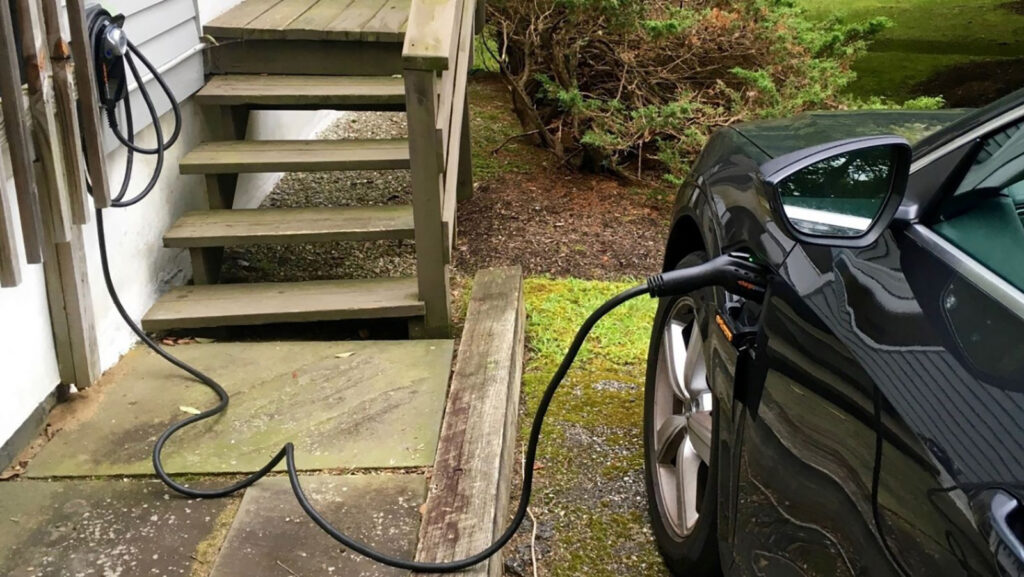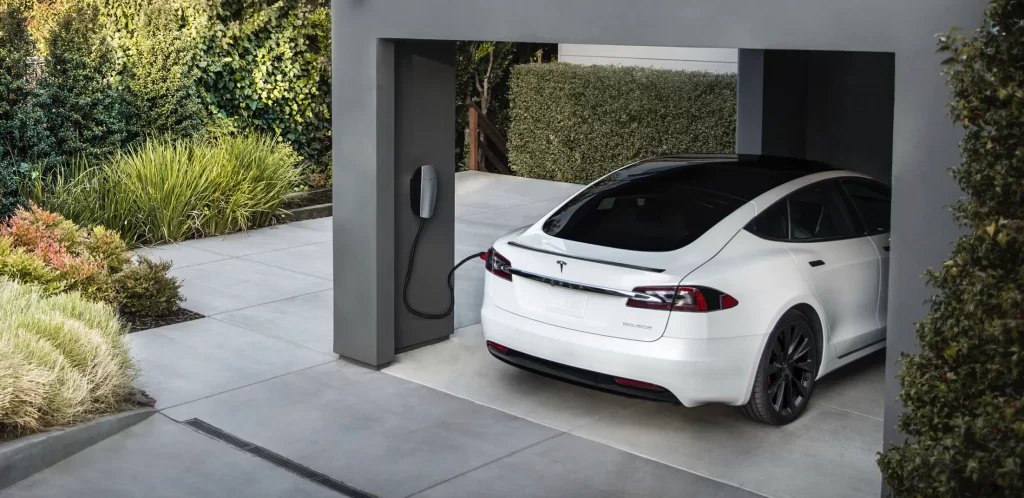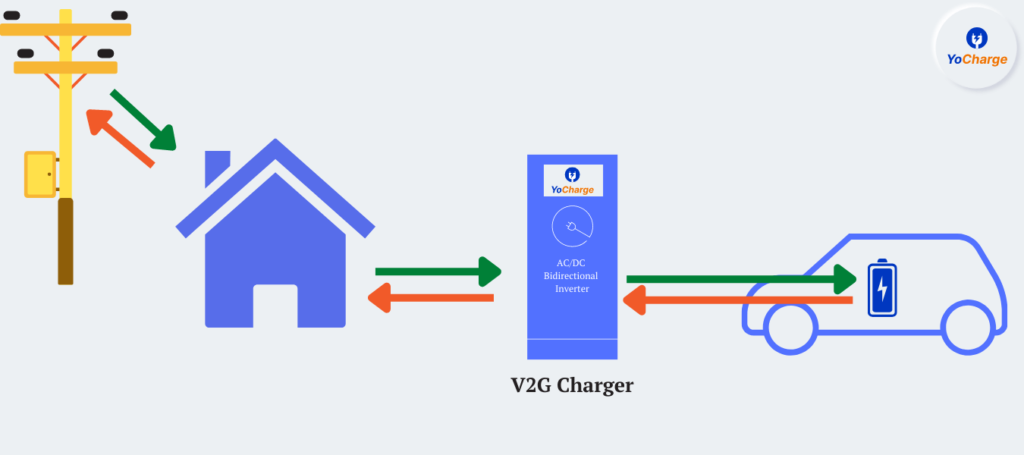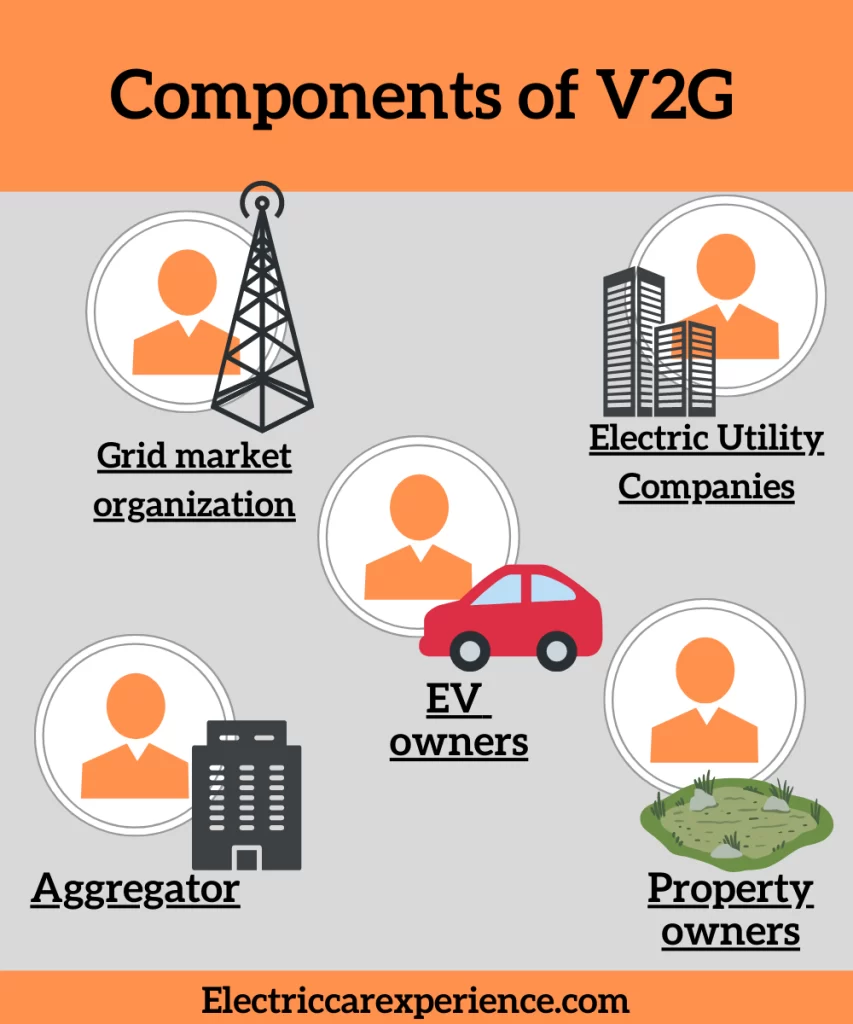
Old electric car batteries can be recycled and disposed of and they come to the end. But If your used electric car battery has a certain amount of the capacity retained, then you can reuse it. Then can you power your house with used electric car batteries?
Yes, you can power your house with used electric car batteries. This is possible with the help of the vehicle to house, vehicle-to-grid technology. Powering your house with used electric car batteries is possible. There are several factors that will be needed to take into consideration when it comes to powering your house with electric vehicle batteries.
Here we try to answer all your queries related to powering your house with used electric car batteries.
Can You Power Your House With Used Electric Car Batteries?

Powering your house with used electric car batteries is possible. There are several factors that will be needed to take into consideration when it comes to powering your house with electric vehicle batteries.
In order to know how it can be done we first need to understand what vehicle-to-home technology is.
What Is Vehicle To Home (V2H) Technology?

In recent years, you might have heard the terminology called V2X. That means using your vehicle to power X.
V2H technology stands for Vehicle to House Technology. It means powering your house with your electric vehicle battery.
Here, X can be, your plug-in devices, another vehicle, or a house or Grid. In that context, technologies are called vehicle-to-load (V2L), Vehicle to Vehicle (V2V), Vehicle to House (V2H), and Vehicle to Grid (V2G) technology respectively.
Coming to Vehicle to House (V2H) technology, the basic idea is to power your house with your electric vehicle battery.
For example, in vehicle to House technology, electric vehicle batteries get charged during the hours when the electricity prices are low, and the energy can be used when the electricity prices are higher.
You can power your house in the blackouts with the help of these charged electric car batteries. The batteries can be recharged in the daytime with the help of cheaper electricity options such as solar panels.
Sounds good right? But wait. Here is a catch.
Apart from theory, for implementing the vehicle-to-grid technology, in reality, there are certain requirements. And it can be more complex than you think.
Requirements To Power Your House With An Electric Car Battery

Though you can power your house with used electric vehicle batteries, you can not just take batteries out of your vehicle and plug them into your house grid.
Also, Not every Electric car battery can power the House. So what are the things we need to consider when we talk about powering a house with a used electric vehicle battery?
There are 2 basic factors that necessarily need to be considered when it comes to powering your house with an electric vehicle batteries
- Size of the EV battery (Capacity)
- Bi-Directional Charging

Size of the Electric Car Battery:
The capacity of an electric car battery is important in vehicle-to-house technology. This tells if an electric car battery is able to power the whole house or not.
Imagine your air conditioner stopped working at midnight just because your electric car battery powering it drained all the power. That’s why the battery capacity is important in V2H technology.
The battery size can be assessed by two things. The first one is the amount of power the battery can store.
And the second one is the amount of power the battery can provide, i.e. Battery Output.

The storage capacity depends on the size of the battery. The power used by American residential is 886 kWh per month. That comes to around 30 kWh per day.
The batteries of electric cars such as the Tesla Model S, and Nissan Leaf can store power anywhere between 60 to 100 kWh. That means most EV batteries can store enough power required for all appliances in the house.
Coming to the Battery output, few of them have sufficient battery output to power a house. Ford lightning 150 has a 2.4 kWh power output, that can be upgraded up to 9.6 kWh.
Tesla Powerwall also has a backup power of 9.6 kWh. This output is sufficient to power your appliances in the house.
We are going to talk more about the tesla powerwall as well as the ford lightning.
Bidirectional Charging:
All EVs do not support vehicle-to-home technology. There should be an ability for an electric car battery to power the house.
The basic reason is Bidirectional charging. This is something that limits the use of electric car batteries to power the house through V2H.
What is Bidirectional Charging?

To power your house with used electric car batteries, it is necessary that the battery is able to flow its power out of it and to the grid.
Bi-directional charging means the ability of the battery to flow power in both directions in and out. In order to power your house with electric vehicle batteries, the battery should have a bi-directional flow of power.
Currently, only a few EV batteries support bi-directional charging. This includes Nissan Leaf, Volkswagen ID1.4, and Ford Lightning 150. Ford Lightning F-150 can power your house for 3 days with its extended battery range.
Bidirectional charging becomes an important factor in powering your home with EV batteries. And if your EV supports Bi-Directional Charging then you just need a bi-directional charger to power your house with electric car batteries.
What is Tesla Powerwall?

Tesla Powerwall is a rechargeable battery that can store solar energy as a backup. And in the situation where the grid is down, it can power your house.
Tesla power wall can help you power your electric vehicle battery. Tesla’s power wall has 9.6kW backup power with a 13.5 kWh battery capacity. Tesla power wall costs up to $10500. There are lots of costs involved with this.
Ford F-150 Lightning

Ford lightning is popular when it comes to vehicle-to-house technology. This is because ford has been advertising its ability to power your home prominently.
Ford F-150 Lightning, can power your home for 3 days. Considering the average usage per day as 30kw.
Making use of Ford F-150 lightning to power your house has its own requirements. These can be costly and affordable based on your budget.
- 80-amp Ford Charge Station Pro (Which comes with F-150 Lighting)
- Intelligent Back-up Power Software
For other standard-range batteries, trucks the Ford Charge Station Pro can be purchased separately. You can check more details on the official website.
Is the Ford F-150 Lightning An Economical Option To Power Your House?
As compared to the tesla power wall, yes it is an economical option. But the actual cost of powering your house with electric car batteries is more than what you think. Here let’s break down the cost to power your house with electric car batteries.
| Component | Cost |
|---|---|
| Cost of F-150 | $41,769 |
| Ford Charge Station Pro Installation | $1310 (If you purchase) |
| Home Integration System Installation | $3895 |
| Ford F-150 Lightning | Depends |
CarandDriver.com have compared the cost of the tesla power walls and the Ford F-150 Lightning. The Ford Lighting F-150 is as powerful as seven-tesla power walls.
And one-tesla power wall costs around $10500. So for seven-tesla power walls, it becomes $73500. While one F-150 costs $41679. Which is almost 43.17 percent less than that of all these tesla power walls.
What is Vehicle To Grid Technology?

If we go one step further, you can actually power a grid with electric vehicles. Vehicle to Grid means storing the power from the grid and powering the grid with the vehicle when needed.
The electric vehicle batteries can actually act as a storage of power when the grid is not in peak hours.
And when the grid is low on power, these electric vehicles could power the grid. Well, that isn’t simple, but many companies and startups are testing it in certain parts of Europe and America.
Is the Off-grid System Created From Electric Car Batteries Legal?
It is legal if you power your home with used electric car batteries, what we call a vehicle to the house. But if we talk about the vehicle to the grid, legal things come into play. Because it involves an electric utility company, aggregator, and certain permissions from regulatory bodies.

The main legal issues can be associated with vehicle-to-grid technologies are
- Allocating Property Rights and Problems of Monopsony
In vehicle-to-grid technology, there is more than one person involved.
The various components that may get involved in vehicle-to-grid technology are electric utility companies, EV owners, the regional grid market organization, property owners, and the distinct owners of the hardware connecting to the grid.
Now the question is who should be declared as a beneficiary of what portion of the economic benefit? So the distribution of property rights is an issue that can arise in V2G technology.
Furthermore, the big players can establish monopsony and the EV owner may get less benefit.
- Net Metering Legislation and Regulation
The regulations need some modifications in net metering through legislation and regulations.
- Interacting with the FERC to Modify Tariff Definitions
In order to implement V2G in wholesale energy markets (i.e., for V2G applications extending across state lines or across the service areas of multiple utilities), the Federal Energy Regulatory Commission will need to approve the proposed “tariff” or charge the grid will pay the V2G aggregator.
- Others
Other legal impediments associated with the vehicle to grid technology are Reliability Considerations, Warranty Problems, Affirmative Incentives, etc.
Conclusion:
Conclusion#1: V2H Technology
You can power your house with used electric car batteries with Vehicle to House (V2H) technology. In theory, it is possible. But it can be complex when you think of doing it in reality.
Conclusion#2: Bi-directional Charging
There are 2 basic factors that necessarily need to be considered when it comes to powering your house with an electric vehicle battery One is the size of the battery and the other is bi-directional charging.
Currently, only a few EV batteries support bi-directional charging. This includes Nissan Leaf, Volkswagen ID1.4, and Ford Lightning 150. Ford Lightning f150 can power your house for 3 days with its extended battery range.
Conclusion#3: Tesla Power Wall
Tesla Powerwall is a rechargeable battery that can store solar energy as a backup. Ford Lightning F-150 is almost 43.17 percent less than all these tesla power walls in cost.
Conclusion#4: Legal Complications
It does not need any legal permission to power your home with electric car batteries, but If we talk about the vehicle to grid technology then permission from the electric utility company is necessary. Legal complications can come in that.
Here we tried to cover most of your queries regarding powering your house with electric car batteries.
FAQ
How many car batteries does it take to power a house?
Depending on the battery you are using, you can power your house with one battery also. For example, the ford F-150 lightning can power your house for up to 3 days with its extended range. An average American uses 30 kW of power every day, so based on that you can calculate the number of electric batteries required to power your house.
Can EV batteries be used for solar storage?
Indeed electric car batteries can be used for solar storage. The electric car battery can act as a storage for the power produced by solar panels.
Many startups are heading the way toward it. Mostly, used electric car batteries can be used for many years to store solar energy. And this can reduce the burden on the land due to improper disposal of electric car batteries.
How long can an electric car battery power a house?
Electric car batteries can power a house from one day to three days, depending on their capacity. The Ford F-150 lightning can power your house for up to 3 days with its extended range. It also depends on how much electricity a user consumes on daily basis and the battery output.
Related Posts
- BMW x5 xdrive40e Tax Credit 2024
- Electric Car Range At 70Mph, 80Mph, 90Mph, and 100Mph (Different Range)- Guide 2024
- Tucker Carlson Electric Cars
- How Do You Reset The Range On A Tesla?
- Is it true that you’re damaging your electric car battery if you let it get below 20%?-An ultimate guide 2024
- Can We Use an Ordinary Car Battery to Power Up Electric Car?
- Top 10 reasons why Tesla Wants to Start Refining Lithium in Texas- An ultimate guide 2024
- Top 10 ways to increase the lifespan of an electric car battery- A complete guide 2024
- electric car battery theft
- Do Electric Cars Use a Lot of Electricity?
- Chevy Bolt Range | What Is The Range Of Chevy Bolt? – 2024 Guide
- Top 5 Reasons Why Electric Car Range Reduce in Cold Weather- A complete guide 2024
- Average Electric Car Battery Replacement Cost
- Is It Okay to Charge Your Electric Car Before it Runs Out of Charge?
- Top 15 best affordable electric cars in the U.S.
